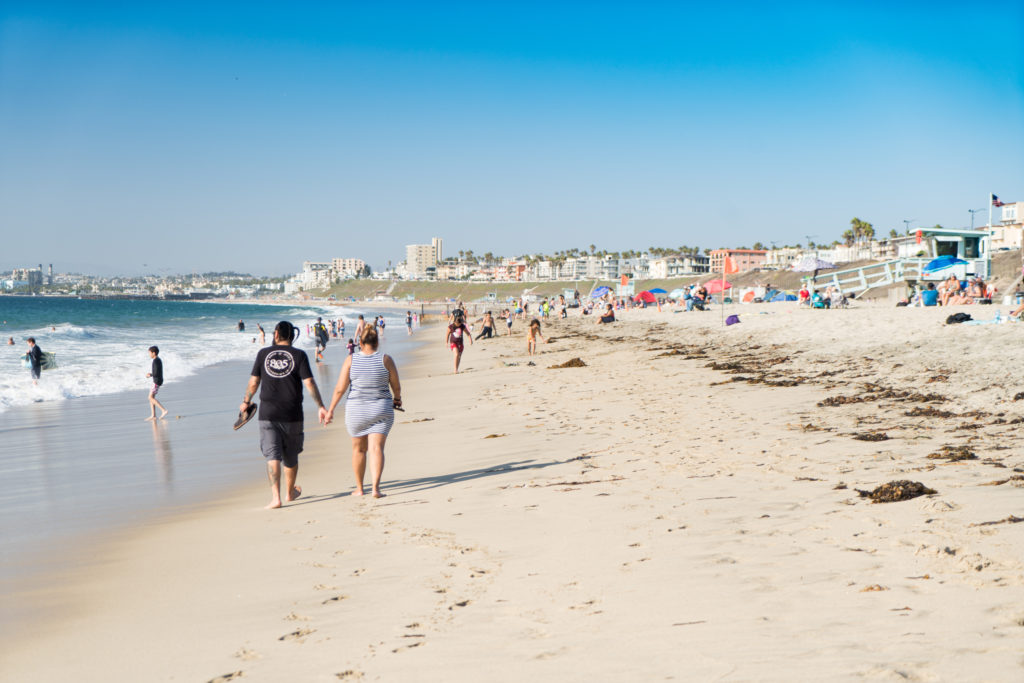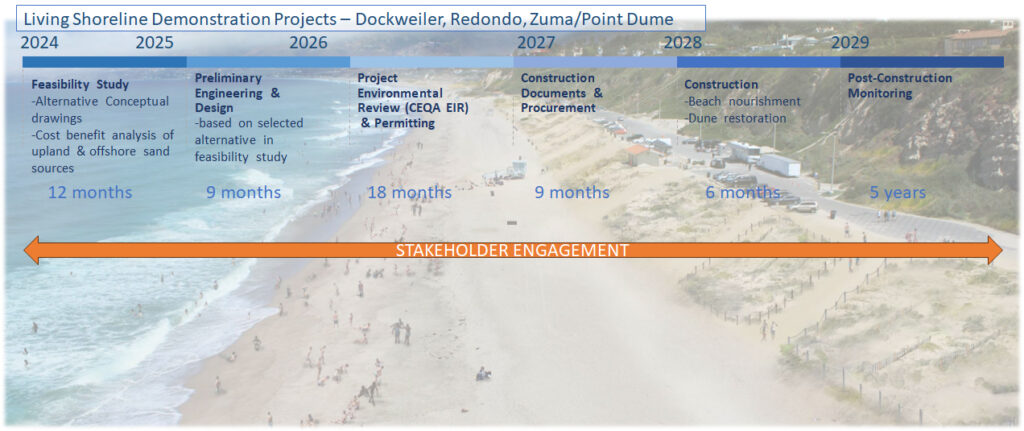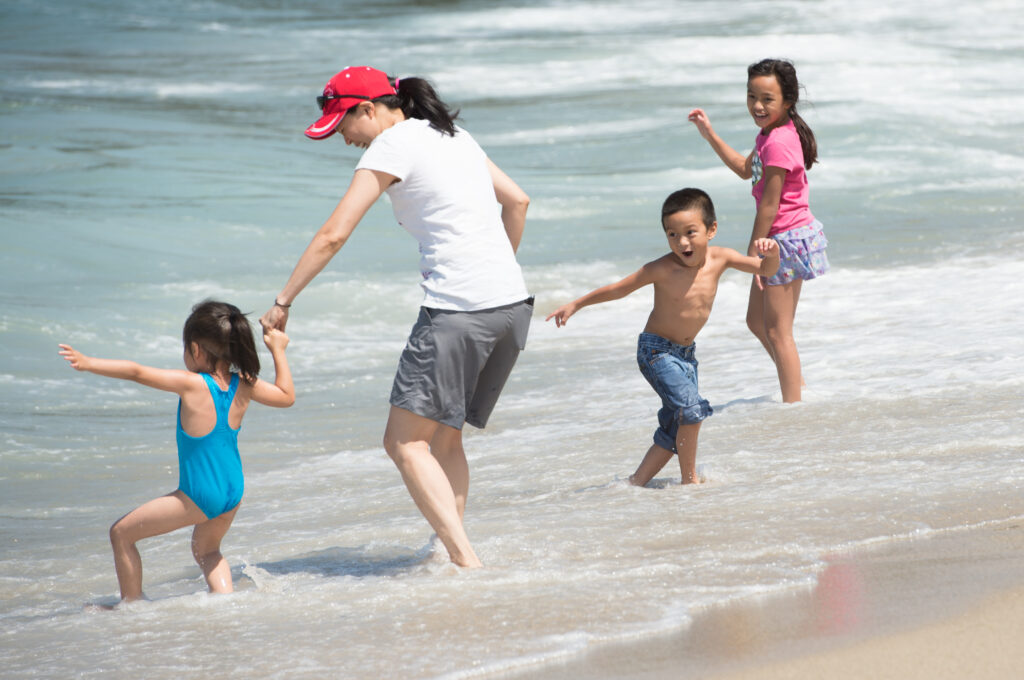GOVERNMENT
COASTAL RESILIENCE
COASTAL RESILIENCE
QUICK LINKS: CURRENT PROJECTS | CONNECT WITH US | STAKEHOLDER MEETINGS | FAQ

The Los Angeles County Department of Beaches and Harbors (DBH) operates and maintains 18 public beaches along the Pacific Ocean coastline, mostly in the Santa Monica Bay, between the City of Malibu and San Pedro, a coastal community within the City of Los Angeles. The unique urban setting of Los Angeles County’s shoreline makes it one of the most valuable coastal resources in California. Its regional beaches provide recreation and enjoyment for more than 70 million visitors annually.
 Due to forecasts of rising sea levels caused by climate change, L.A. County initiated a process of proactive preparedness by assessing the potential threat that its public beach assets may face through the year 2100. The 2016 Sea-level Rise Vulnerability Assessment and 2023 L.A. County Coastal Resilience Study documented and evaluated the vulnerability of existing coastal public infrastructure, including access roads, parking lots, coastal access points, beaches, restrooms, bike paths, maintenance yards, lifeguard stations, and other recreational amenities (volleyball courts, picnic tables, etc.), to sea level rise and coastal flooding.
Due to forecasts of rising sea levels caused by climate change, L.A. County initiated a process of proactive preparedness by assessing the potential threat that its public beach assets may face through the year 2100. The 2016 Sea-level Rise Vulnerability Assessment and 2023 L.A. County Coastal Resilience Study documented and evaluated the vulnerability of existing coastal public infrastructure, including access roads, parking lots, coastal access points, beaches, restrooms, bike paths, maintenance yards, lifeguard stations, and other recreational amenities (volleyball courts, picnic tables, etc.), to sea level rise and coastal flooding.
DBH has initiated collaborative efforts with other agencies and aims to include a public information education effort as we advance towards implementation of adaptation strategies that will protect and enhance access to and management of our coastal resources.

Click on a question below to view the answer, or enter a keyword to search.
What is the purpose of the Coastal Resilience Study?
The purpose of the study was to identify ways to preserve existing beach resources and amenities while also enhancing access for inland residents and visitors to our coast.
The study pursued balancing goals related to reducing coastal erosion, enhancing climate resiliency, and advancing equitable coastal access, and applied a multi-scale approach, from a broader understanding of the regional shoreline to site-specific scale, in characterizing vulnerabilities and providing adaptation guidance.
The study evaluated risks, detailed adaptation strategies, and prioritized projects based upon forecasted coastal erosion and sea level rise coupled with project co-benefits and appropriate shoreline protection measures to preserve and enhance LA County beaches, including infrastructure and facilities, recreational open space, natural and cultural resources, and habitat for sensitive species.
The study focused on three overarching goals:
- Assess vulnerability to existing coastal hazards and sea level rise with a focus on equitable access
- Identify coastal resilience demonstration projects
- Increase resilience across the system, starting with the most vulnerable beaches
How were the demonstration project sites selected?
In the Coastal Resilience Study, 18 County-operated beaches were evaluated according to four categories:
- Existing physical beach conditions – factors such as minimum beach width and erosion rates
- Future physical beach conditions – how vulnerable the beaches will be to future sea level rise under two different scenarios
- Resources and amenities – what is available on the beach for public use
- Use includes three different metrics:
- Average daily attendance (this information came from lifeguards’ daily counts data)
- Parking (both availability and ease of parking),
- Ease of access to our beaches
The beach sites were ranked based on the vulnerability score compiled from assessment in above categories. The study determined that Zuma and Point Dume Beaches, Dockweiler State Beach, and Redondo Beach were the top 3 project sites that were suitable for demonstrating a Living Shoreline Climate Adaptation Strategy.
What is a Living Shoreline Climate Adaptation Strategy?
A living shoreline is a nature-based solution to reduce erosion against waves and projected sea level rise by purposefully using natural materials, such as sand, plants and rocks. LA County’s living shoreline demonstration projects strategically install sandy dunes to widen and stabilize the beaches as well as enhancing natural habitats for shore birds and other coastal species. The Coastal Resilience Study generated a preliminary conceptual drawing for each project site (below) that will evolve into three alternative conceptual designs per site as we consider and incorporate stakeholder comments and feedback during the feasibility study of the implementation phase.
Figure 1: Zuma/Point Dume Beach Preliminary Conceptual Drawing (beach nourishment, dune installation/expansion, potentially submerged “living breakwater”)

Figure 2: Dockweiler Beach Preliminary Conceptual Drawing (sand barrier, dune fencing)

Figure 3: Redondo Beach Preliminary Conceptual Drawing (Beach nourishment, dune installation, potentially “green” groin)
How much will the projects cost and how will they be paid for?
The three demonstration projects are estimated to cost approximately $70 million. The Department of Beaches and Harbors is actively pursuing local, state, and federal funding through grants and partnerships to leverage resources and deliver high-quality projects.
How will the demonstration projects incorporate public input?
DBH will engage with local organizations and County residents throughout the planning phase of the projects to ensure that project designs reflect public input. To this end, the expectation is that a series of stakeholder meetings and other outreach events will occur during the projects’ feasibility/design phase.
When will the projects be completed?
Project construction is subject to securing funding, conducting community outreach, and securing appropriate permits. The projects will be phased and are expected to take about five years to implement as outlined below. Post-construction monitoring is intended to evaluate the effectiveness of the demonstration projects to plan re-nourishment efforts and learn practical lessons to apply to other beach sites in the future.

How is the Coastal Resilience Study related to the November 2023 Board Motion, co-authored by Supervisors Holly Mitchell and Lindsey Horvath?
On November 7, 2023, the Board of Supervisors adopted the motion, Protecting L.A. County’s beaches from coastal erosion through the beneficial reuse of sediment and by deploying living shorelines, to protect beaches utilizing a nature-based living shoreline approach for L.A. County’s Beaches. In response, DBH developed a detailed funding and outreach approach to guide the Department in the implementation of demonstration projects that champion nature-based adaptation strategies.
The Board motion also encouraged the Los Angeles County Flood Control District to assess the feasibility of reusing unwanted sediment in the flood control facilities, such as dams and debris basins, for beach nourishment purposes, which added a potential sand source to be used in the demonstration projects.
How do I get involved?
- Sign up for the coastal resilience email list information about upcoming meetings and outreach events.
- Questions? Interested in co-hosting an outreach event? Email us!
- Tell your neighbors and friends!


